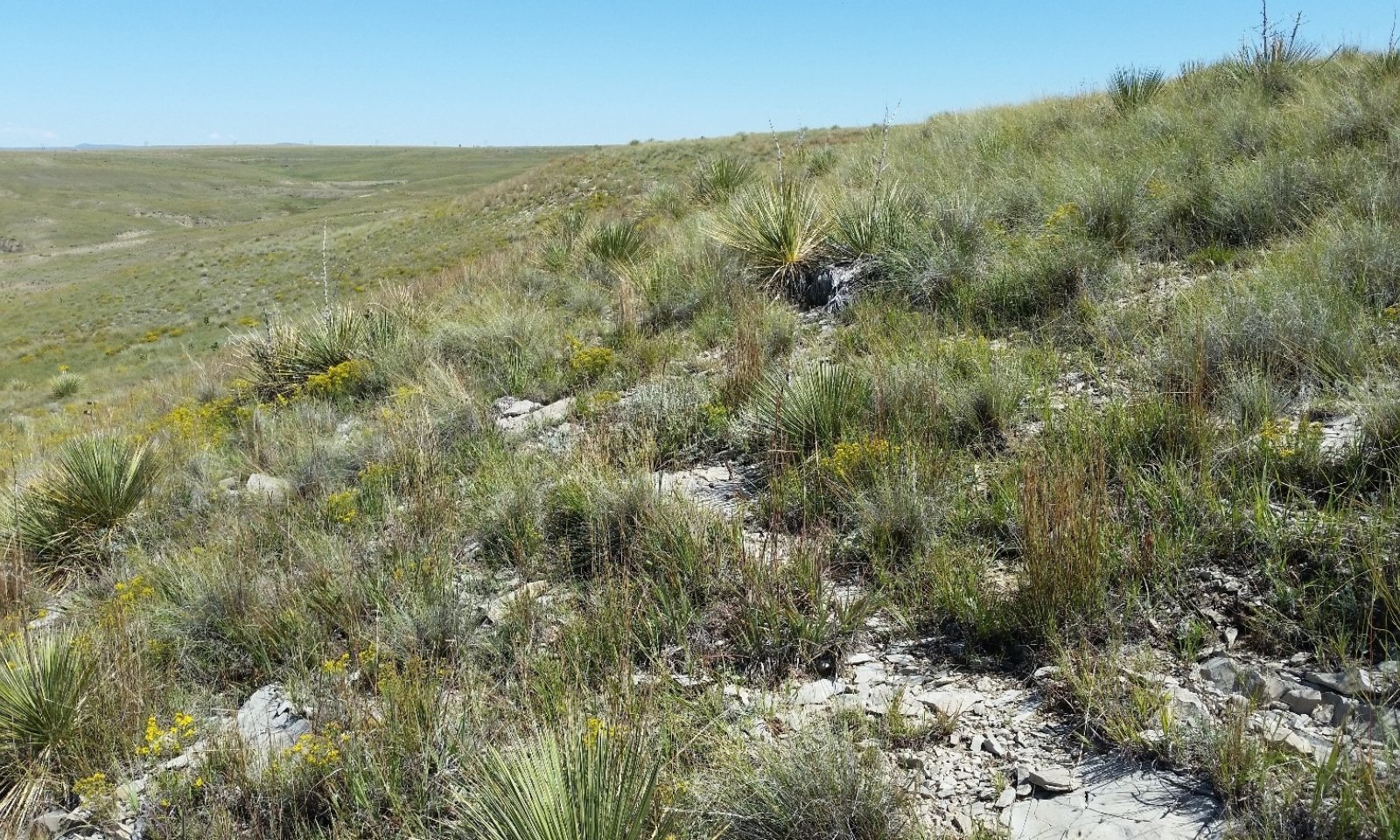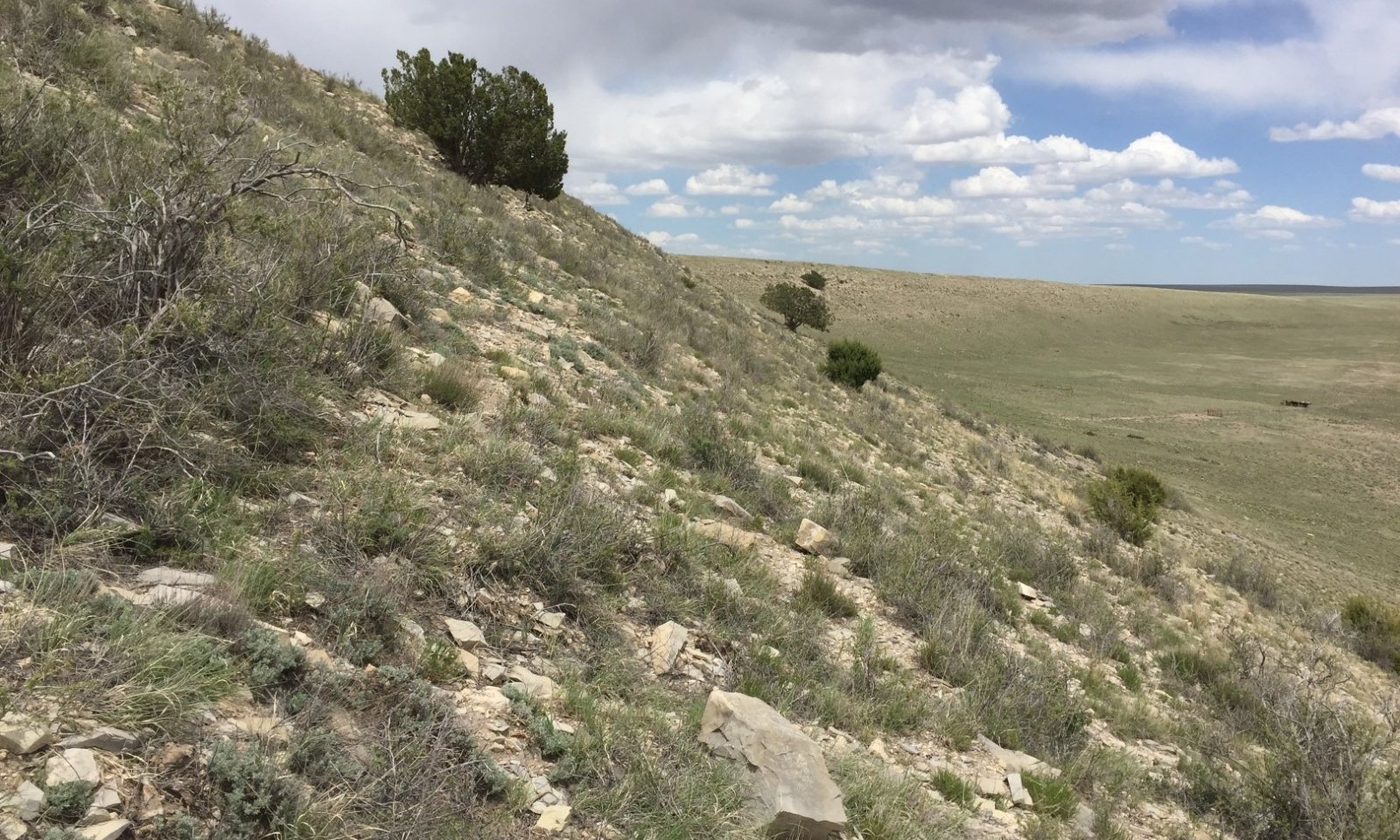
Limy Escarpments
Scenario model
Current ecosystem state
Select a state
Management practices/drivers
Select a transition or restoration pathway
- Transition T1A More details
- Restoration pathway R2A More details
-
No transition or restoration pathway between the selected states has been described
Target ecosystem state
Select a state
State 1
Reference State




Description
This state exists where the effects of grazing pressure are less pronounced. The two most obvious variables that distinguish States 1 and 2 are the annual production and species composition of grasses. Since topsoils are characteristically thin and soil profiles are generally protected from erosion by surface fragments, thickness of topsoil is not a reliable indicator of state or community phase.
While trees can be found on all states and phases of this site, they are generally confined to the uppermost portions of the escarpment in State 1. Significant encroachment of trees onto the lower escarpment (where limestone bedrock does not control soil depth) only occurs in State 2.
Submodel
State 2
Degraded State



Description
This state occurs where a prolonged continuous grazing regime, coupled with fire suppression (intentional or incidental) has resulted in diminished diversity and vigor in the grass community, and an attendant increase in the abundance of woody plants. Total annual production is significantly lower than in State 1. Tallgrass species are absent, and early seral grasses such as purple threeawn, galleta, and silvery bluestem are well-represented.
Submodel
Mechanism
This pathway represents season-long grazing providing little rest and recovery for preferred grazed plants during critical growing periods, coupled with high utilization. The absence of fire is also a component of this pathway. Drought is thought to push the plant community over the threshold into the degraded State 2. During this transition, tallgrass species are extirpated. Highly palatable and grazing-sensitive grass species are diminished—both in vigor and abundance. Concurrently, shrub and tree species enjoy a competitive advantage, and increase in abundance.
Mechanism
This process results in the recovery of the vigor and diversity of herbaceous species, as well as a significant increase in total productivity. Since tree encroachment beyond the shallowest soils of the upper escarpment seems to effectively prevent such a process, it is likely that this process will only proceed from community phase 2.1. While the eradication of tree species will do much to promote the vigor of other functional groups, the recovery of vigor among existing palatable species will also require careful grazing management. Since State 2 lacks some of the species present in State 1, restoration will be incomplete without the reintroduction of certain species—particularly big bluestem. Whether or not the establishment of these species requires human intervention will depend on a number of factors, including proximity to a seed source and the activities of migratory animals.
Model keys
Briefcase
Add ecological sites and Major Land Resource Areas to your briefcase by clicking on the briefcase (![]() ) icon wherever it occurs. Drag and drop items to reorder. Cookies are used to store briefcase items between browsing sessions. Because of this, the number of items that can be added to your briefcase is limited, and briefcase items added on one device and browser cannot be accessed from another device or browser. Users who do not wish to place cookies on their devices should not use the briefcase tool. Briefcase cookies serve no other purpose than described here and are deleted whenever browsing history is cleared.
) icon wherever it occurs. Drag and drop items to reorder. Cookies are used to store briefcase items between browsing sessions. Because of this, the number of items that can be added to your briefcase is limited, and briefcase items added on one device and browser cannot be accessed from another device or browser. Users who do not wish to place cookies on their devices should not use the briefcase tool. Briefcase cookies serve no other purpose than described here and are deleted whenever browsing history is cleared.
Ecological sites
Major Land Resource Areas
The Ecosystem Dynamics Interpretive Tool is an information system framework developed by the USDA-ARS Jornada Experimental Range, USDA Natural Resources Conservation Service, and New Mexico State University.

